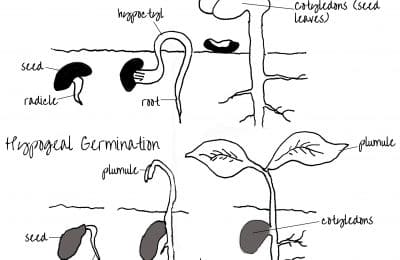Level 2 Garden Planning
When creating a new garden design we need to consider:
- views from the house over the garden
- outward views from the garden over the landscape
- views over the garden from surrounding buildings (overlooking).
Views From the House
We can begin by considering how the garden is experienced by residents inside the house. The location of windows overlooking the garden should be noted during the site assessment, along with the size of each window and the height of the window from the ground.
It may also be helpful to view the garden from inside the house through the window in question, both while standing and sitting. The window can be considered a frame for the garden view. While a full height picture window will give an unobstructed view of the garden, a smaller window may give a much reduced view. Thick glazing and cross bars can further reduce and frame the view. Existing planting may also obstruct the view from a window.
The garden can be planned to ensure that there is an attractive view from each window, and that the design compliments the interior of the home.
Views From the Garden
Gardens will often include both desirable and undesirable views. A garden design can be planned to enhance attractive views whilst screening or distracting from the undesirable ones.
Some gardens have almost an excess of pleasant views. This can be a challenge for the designer as the views tend to detract from the garden, however well-designed it might be. One way of addressing this challenge is to break down the view into a series of carefully planned pictures, framed by plants.
Undesirable views can be concealed using hard landscaping such as a wall or fence, or tall foreground planting. In some cases, it is not possible to completely conceal an undesirable view, but the garden can be planned to direct attention away from it, or to break it up so it has less visual impact. Trees, for example, can be used to break up the hard outlines of buildings and reduce the reflected light from windows. If several trees are planted, they can create a woodland appearance, even if they are spread quite far apart.
When using plants to conceal unattractive features, avoid using unnatural shapes and colour; these will draw attention to themselves and therefore to whatever you are trying to hide. Instead, try to use natural, local plants to harmonise with your surroundings and to blend with, rather than totally obscure, what you are trying to hide.
Rosemary Alexander, The Essential Garden Design Workbook.
Overlooked Gardens
Overlooked gardens can leave residents feeling exposed and lacking privacy. It is rarely possible to completely remove this problem, but a careful design can create a greater sense of privacy and seclusion so that the garden is more welcoming.
Solutions include fencing, trees, summerhouses, gazebos, and covered seating. Trees can be used to reduce the hard lines of built structures Pleached trees (left) are also a popular option because they create natural privacy screening whilst using minimal space. They are often combined with fencing or a wall.

